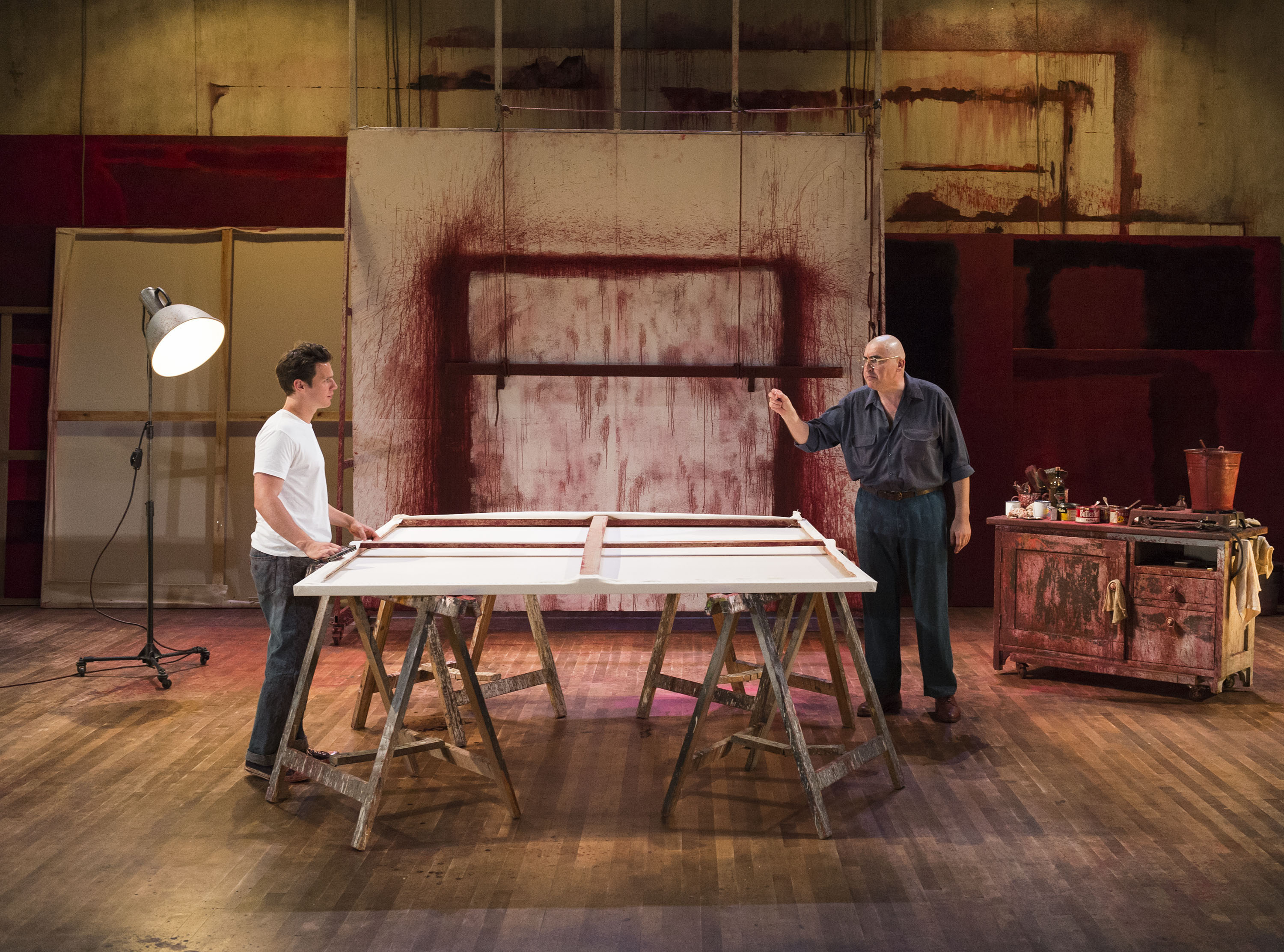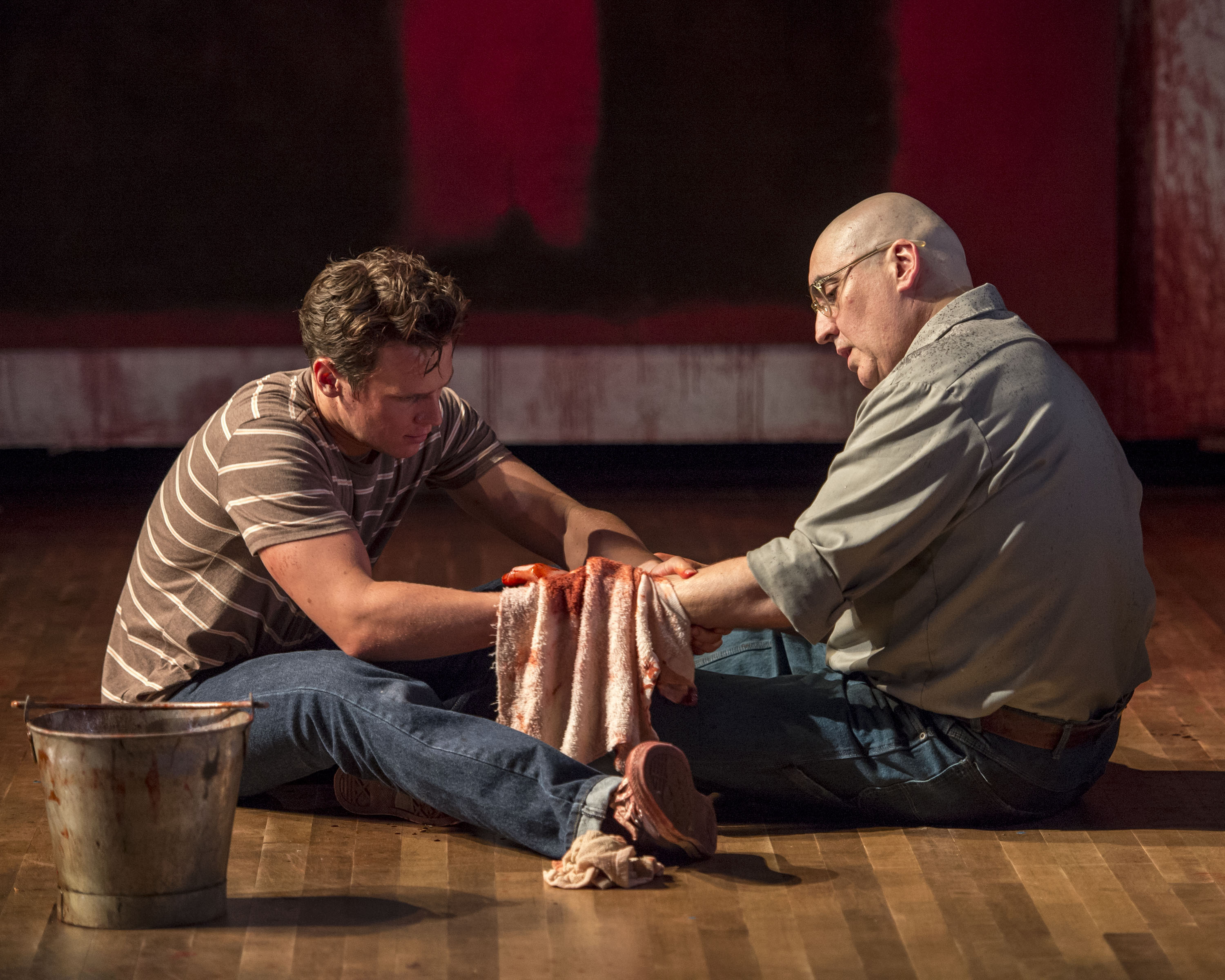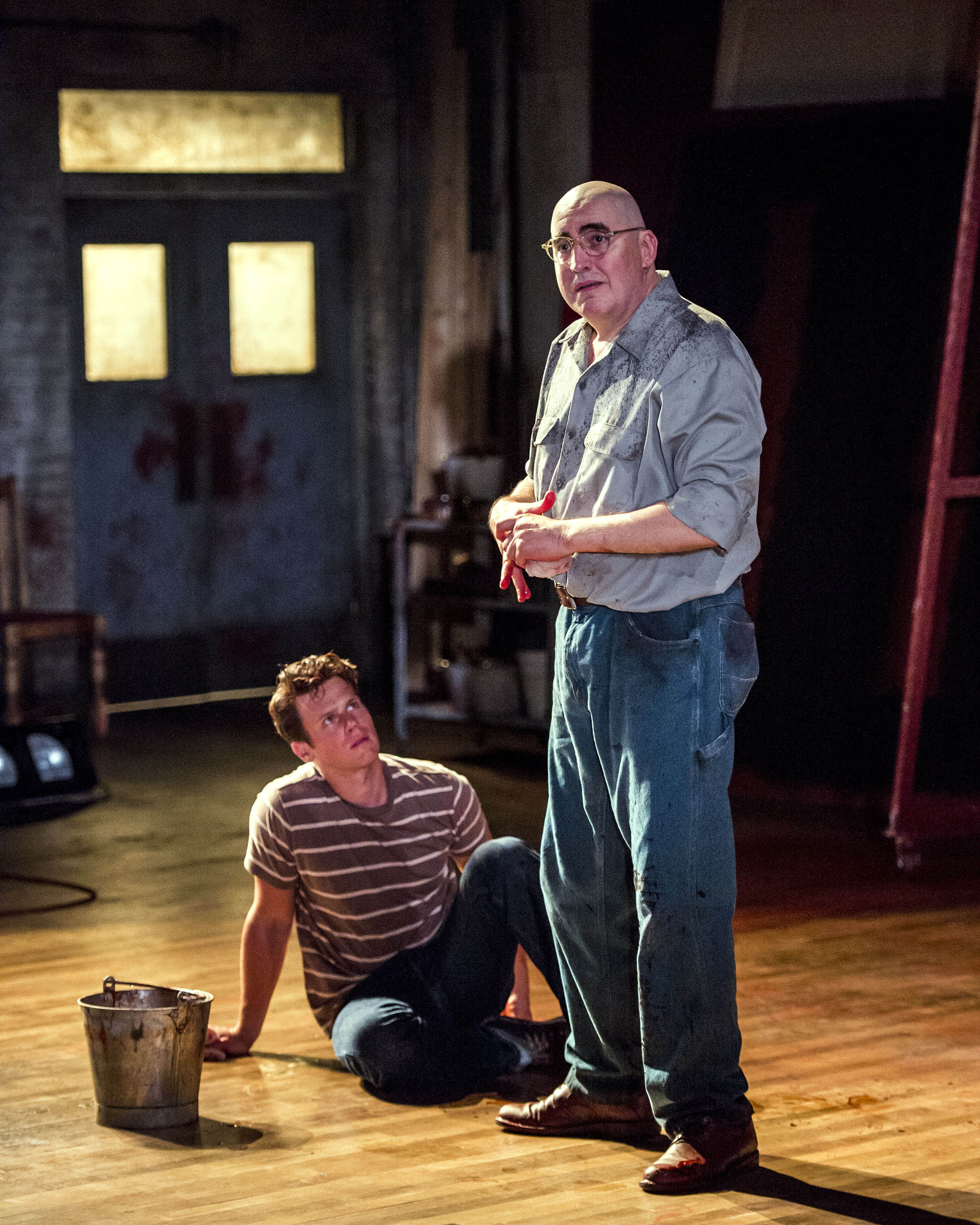
Courtesy of Craig Schwartz

Courtesy of Craig Schwartz
Red
through Sept. 9
Mark Taper Forum
![]()
![]()
![]()
![]()
Mark Rothko (Alfred Molina) reclines in a wooden chair without a single movement as the theater seats begin to fill. He stares pensively at one of his finished canvases mounted on the wall until, suddenly, the lights dim. He ignites his cigarette, and a stream of silk grey smoke dances through the air in slow motion, setting life to the stage.
“Red” focuses on these details of the minute, forcing the audience to appreciate what is normally ignored and to consider what is painful to accept. The 2010 Tony Award-winning play by John Logan is written as a two-character play with Rothko and his apprentice Ken (Jonathan Groff) as the only two people to ever appear on the stage.
The story revolves around Rothko, a Russian-Jewish painter during the post-World War II era, who struggles with his work as expressionist art falls to the wayside. He finds himself unable to deal with the changing standard introduced by thinkers like Andy Warhol and Roy Lichtenstein who bring in the new genre of pop.
Ken comes along after Rothko decides to make paintings for the newly opened Four Seasons restaurant, a hub for socialites and the affluent. As they prepare this collection, Rothko is caught in the warzone of his past as it collides with an evolving present that no longer appreciates his art the way it used to.
Entirely opposite from his mentor, Ken is a jazz-listening earnest young painter who aspires for the greatness Rothko once reached. He has a desire to learn and make something of himself, but always grapples with where to go and how to find that path.
The interactions, moments of confrontation and dramatic verbal spars between Rothko and Ken reveal the two realities of individuals who are evidently separated by both generation and thought.
Molina gives a brilliant performance in his deliverance of emotion through his frequently uncensored frustration at Ken and maniac rants about the rarity of true talent. Although an entirely different role from when he played Dr. Octavius in “Spider-Man 2,” Molina still manages to carry over an undeniable stage presence through the punctuated cadence of his speech and ability to feed off of the only other man to appear on stage.
Groff’s own portrayal of Ken pinpoints the epitome of a naive apprentice emblazoned with passion. The energy of Groff’s character on stage keeps the play in forward motion, and his ability to match Molina’s heightened displays of expression balance the dynamics in a show that can easily be stolen by one character alone.
The stage itself is an imitation of a warehouse studio, laden with mural-sized canvas paintings leaning against the back wall and complete with lighting fixtures suspended overhead ““ although these are kept turned off for all but one moment in the play. For the majority of the time, the stage is lit by a single standing lamp or, occasionally, orange phosphorescent lights. Windows are fixed at the top of the wall that change in levels of brightness to reflect the time of day, one of the only connections to the outside world.
Light quickly becomes a critical element in highlighting Rothko’s and Ken’s internal circumstances through following their emotional cues. At times during the play the windows transition into daytime to reveal the duration of their thought processes and, at other times, the stage would exude a photo-luminescent light to bring out the hellish bright red and frightening black of his paintings, highlighting Rothko’s guilt after selling out.
Through unraveling the tragedy of a great painter’s fall and presenting the puzzling internal psychologies of both mentor and mentee, “Red” exposes the cyclic struggle of the artist in any era and the need for constant self-exploration. Logan’s minimal use of excessive characters or lavish stage props shifts the emphasis to the poignant influence of narrative voice.
In the same way Rothko is consumed by his paintings, the play takes hold of the audience’s mind ““ slowly, unknowingly and unrelentingly.
